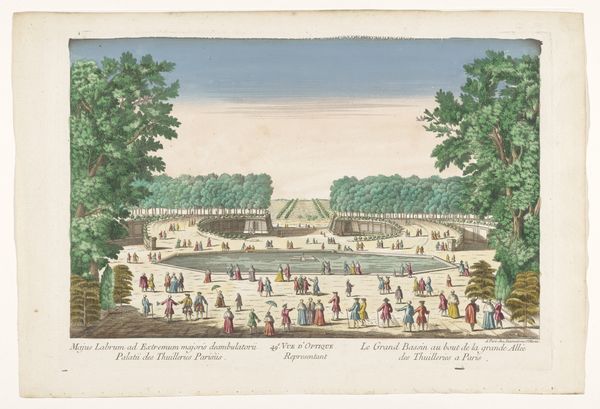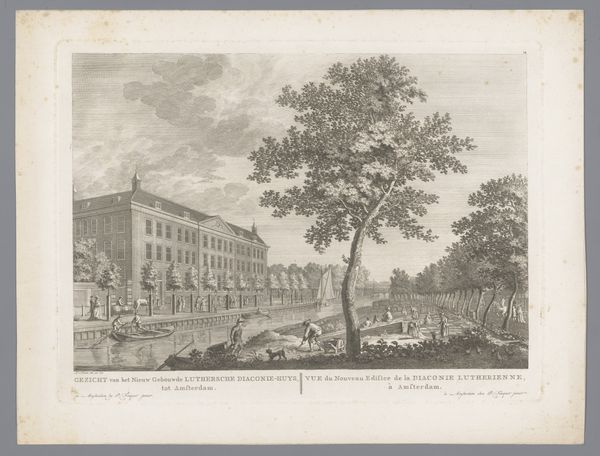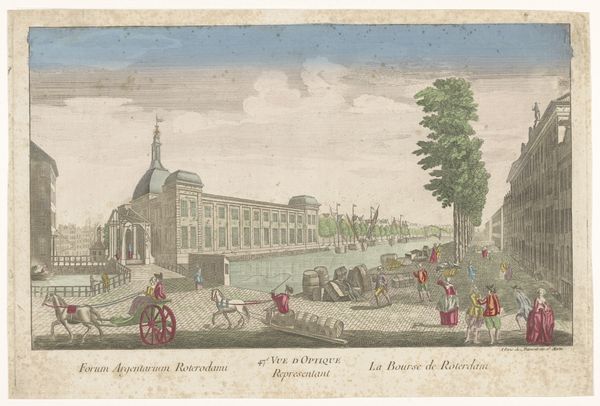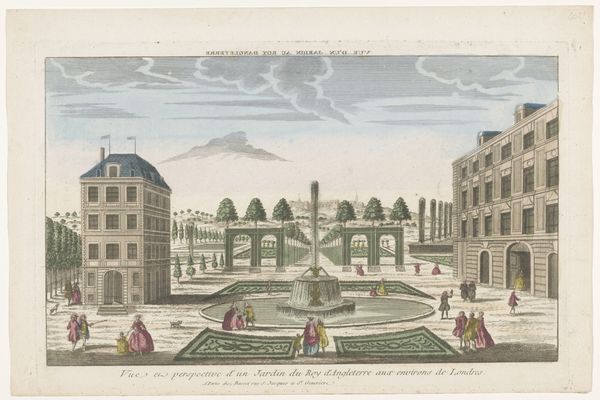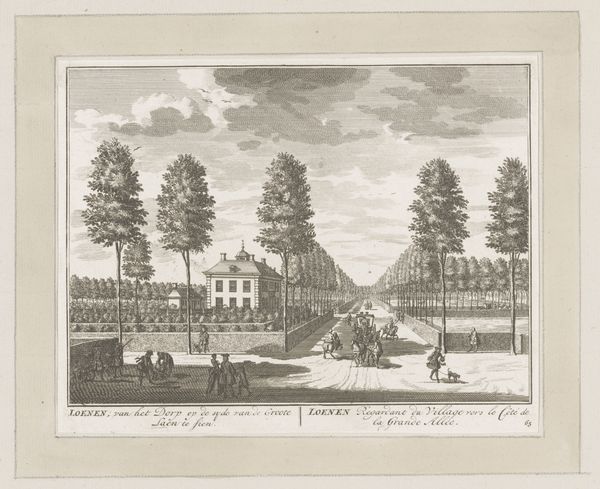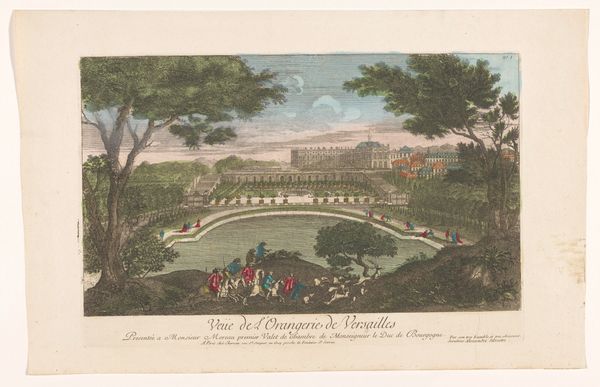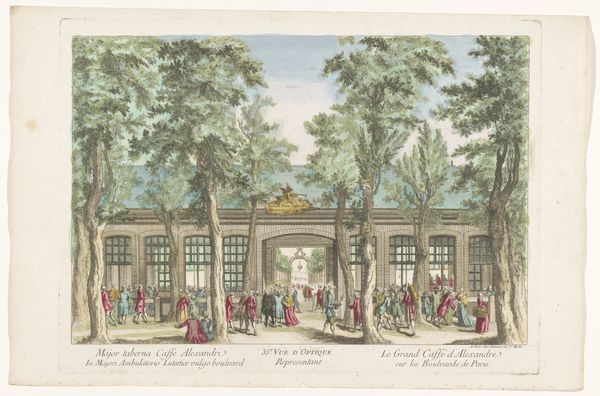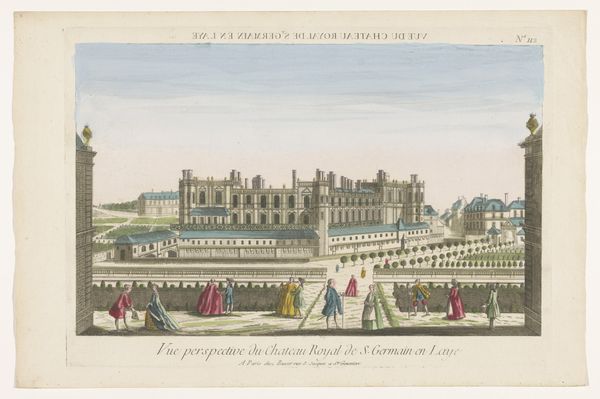
Gezicht op de Cour de la Fontaine van het Palais de Fontainebleau 18th century
0:00
0:00
print, watercolor
# print
#
landscape
#
watercolor
#
cityscape
#
watercolour illustration
#
genre-painting
#
rococo
Dimensions: height 296 mm, width 425 mm
Copyright: Rijks Museum: Open Domain
Curator: Before us is an 18th-century print titled "Gezicht op de Cour de la Fontaine van het Palais de Fontainebleau," found in the Rijksmuseum collection. It combines watercolor with printed lines to depict a scene at the famous palace. Editor: My initial response is one of detached observation; a kind of dollhouse world, the colors feel subdued, almost dreamlike, lending an air of polite tranquility to the courtly scene. The rigid, receding lines of the architecture contrast interestingly with the organic forms of the trees. Curator: The architecture itself presents a powerful symbol, does it not? Notice the regimented facade of the palace—its rigid geometry signifying absolute power, the linear repetition intended to instill a sense of order and control in its inhabitants. It’s quite typical of the period. Editor: Precisely! The visual order certainly underlines the court's structured social hierarchy, even though the miniature scale somewhat tempers that overwhelming impact. Then you notice figures dotted along the pathway and on the water—each positioned, and deliberately, placed almost as a character on a stage. Curator: And the use of color—pale blues and greens, muted rose tones—contributes to this stage-like setting, I think. Semiotically, each hue would represent complex ideas, wouldn’t you say? Pink for elevated status, the muted greens and blues signifying, if you will, decorum. Editor: Undoubtedly! It invites a deeper look into Rococo era aristocratic rituals. Beyond the visual, these garments carry history: a silent dialogue of wealth, propriety and carefully projected societal position. Every flutter of a fan, every carefully positioned hat communicates unspoken messages in the complex dance of the court. Curator: Looking again, I am reminded of the artifice inherent in such views. A careful control, the perfect staging of human interaction and architectural might! Editor: Yes, beyond its surface simplicity, it serves as a poignant visual reminder of the constructs upon which social standing rests and an imagined representation of that period.
Comments
No comments
Be the first to comment and join the conversation on the ultimate creative platform.

